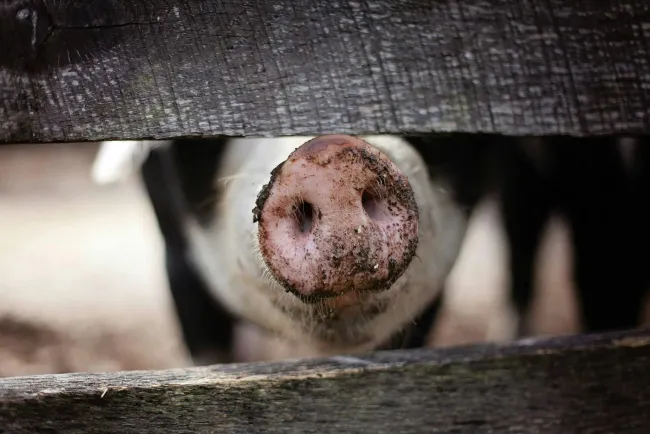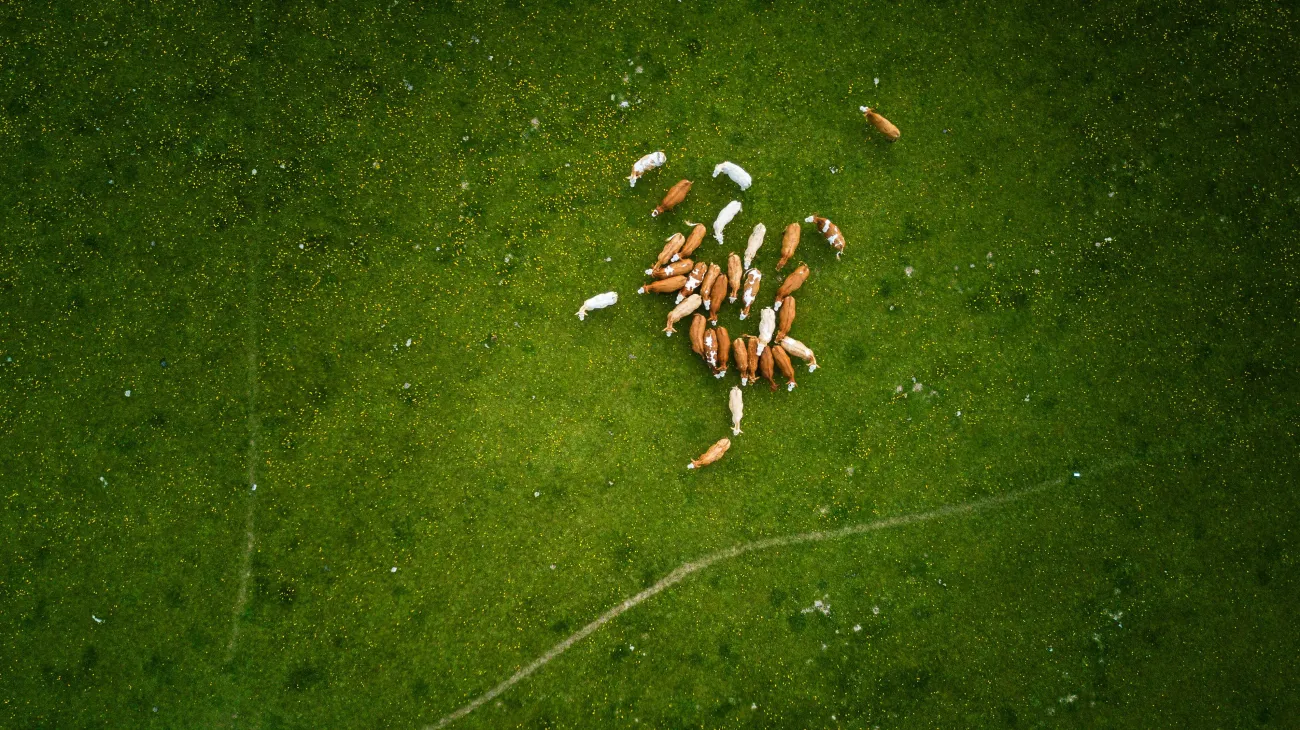This study explores how the impacts of pig farming co-vary in different pig production systems across Brazil and the UK. It argues that the externalities (consequences that affect external parties) of pig production have historically been examined in isolation, and trade-offs have never been robustly investigated. Based on 91 widely varying farms, the authors find that no particular farming type, from organic to indoor intensive, free range to woodland - performed well across all the main impact categories examined; greenhouse gas emissions, land-use, antimicrobial use and animal welfare. However, it finds that individual farms performed well across the categories. Therefore the study concludes that efforts to minimise trade-offs should focus on lowering impacts within system types rather than only changing between them.

This article examines and contrasts four impacts of pig production system; greenhouse gas emissions (GHG), land-use, antimicrobial use and animal welfare, in different production systems in the UK and Brazil. The study says the externalities of pig production have never been systematically measured together across farming systems. The authors focus on pig production because it uses 8.5% of arable land globally, it accounts for 9% of livestock GHGs and uses more antimicrobials than any other livestock sector. Global pork consumption has quadrupled in the last 50 years.
The authors argue that the impacts of agriculture are thought to have linear trade offs – farms that perform well in one domain generally perform poorly in all others, e.g. livestock systems that have low land-use requirements generally have poor animal welfare. But the few studies that examine the relationship between trade-offs in different production systems find that trade-offs are in fact less prominent than hitherto perceived. For example in an arable context, a positive association was found between low GHGs and high soil organic carbon in Chinese grain. This study set out to do the same in pig production to explore efficient mitigation strategies in livestock production.
The study assessed 74 farms in the UK and 17 in Brazil. In the UK, it collected primary data farms complying with three assurance schemes (Red Tractor, Organic and RSPCA) and two non-assurance product labels (free range and woodland) with different husbandry practices; indoor, hybrid and outdoor. In Brazil, the study compared farms with two different finishing systems; slatted and solid floor and three breeding systems; hybrid, indoor with gestation crates, and indoor with gestation crates and group housing.
The results showed large variation in production systems in both Brazil and the UK: land-use footprints varied by a factor of 12, GHGs by a factor of 9, antimicrobial costs ranged from 0 to 606 mg per kilo of pork, and there was also a wide difference in animal welfare outcomes. The authors did not find significant differences in land-use and GHG impacts between the UK and Brazil-based farms, but Brazil had significantly higher AMU and poorer animal welfare outcomes. Within UK systems, the study found a positive association between systems with low land-use and GHG emissions, and a negative relationship between land-use and GHGs on the one hand, and AMU and animal welfare on the other. However, authors found there were individual farms that did not fit the overall negative associations and performed well in all categories.
They noted that the best-performing farms were spread among different production systems; three were RSPCA assured farms in which pigs were reared outdoors and finished in straw yards, one was woodland and one fully indoor Red Tractor farm. The authors pointed out that no organic or free range farm performed in the top 50% when it came to low land-use and GHG emissions, despite common perceptions of organic and free range being more environmentally friendly. The authors said this finding stands in contrast to consumer perceptions ( although note that they cited a comment article on Nature Food that did not mention organic or free range production systems).
Meanwhile, the worst performing across all four impact categories were three Red Tractor farms and one RSPCA assured farm. No production system type performed consistently well across the categories, which the authors argued had important implications for consumers, as labelling does not allow them to make informed decisions about these impacts.
The results from Brazilian farms echoed the UK findings, with positive associations found between land-use and GHG costs, although the associations were less clear possibly due to the smaller sample size. As in the UK results, the study found that 3 systems performed in the top 50% of all four domains. It concludes that trades off do indeed exist but examining individual systems reveal that they are not inevitable.
According to their findings, the authors suggest that efforts to mitigate negative impacts of pig production (across all areas of concern) should focus on lowering impacts within system types rather than only changing between them. To illustrate this point, it cites the environmental consequences and trade-offs of a total shift to organic pig production in the UK compared to shifts to Red Tractor and RSPCA assured, assuming that consumption remains at current levels. The authors predict that animal welfare and AMU outcomes would significantly improve, but this switch would generate three times more GHGs and use four times the land.
The authors emphasise that it’s down to how stakeholders prioritise, balance and value different externalities (for example, whether GHG emission reductions are considered more important than animal welfare) which will determine the optimal types of production systems. However, they suggest interventions may be more effective if they focus on improvements in outcomes than changes in farm types.
While the study focused on only 4 areas of concern (land use, GHGs, animal welfare and AMU), the authors conclude by suggesting that future research could usefully expand the scope to consider social outcomes such as the financial viability of production systems and farmers’ well-being.
Abstract
Farming externalities are believed to co-vary negatively, yet trade-offs have rarely been quantified systematically. Here we present data from UK and Brazilian pig production systems representative of most commercial systems across the world ranging from ‘intensive’ indoor systems through to extensive free range, Organic and woodland systems to explore co-variation among four major externality costs. We found that no specific farming type was consistently associated with good performance across all domains. Generally, systems with low land use have low greenhouse gas emissions but high antimicrobial use and poor animal welfare, and vice versa. Some individual systems performed well in all domains but were not exclusive to any particular type of farming system. Our findings suggest that trade-offs may be avoidable if mitigation focuses on lowering impacts within system types rather than simply changing types of farming.
References
Bartlett, H., Zanella, M., Kaori, B. et al. Trade-offs in the externalities of pig production are not inevitable. Nat Food 5, 312–322 (2024).
Resare Sahlin, K., Röös, E. & Gordon, L.J. ‘Less but better’ meat is a sustainability message in need of clarity. Nat Food 1, 520–522 (2020).
Read more here. See our Meat the Four Futures podcast and report.




Comments (0)